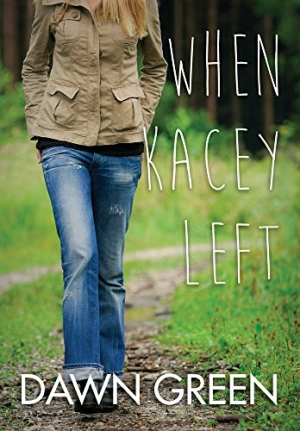When Kacey Left
The journal format of this spare novel allows for an in-depth examination of the daily grief experienced after a friend’s suicide.
When Kacey Left, an epistolary novel, traces the aftermath of teen suicide. Dawn Green’s succinct story for high schoolers examines bewilderment, and displays a talent for portraying the unsettling feeling of being defined as the best friend of the girl who died. Through a series of letters that imagine conversations between the writer, Sara Stickley, and Kacey, and letters that detail Sara’s return to school in the midst of curiosity and sympathy, living with absence turns both emotional and revelatory.
Sara’s letters to Kacey begin as a therapeutic exercise suggested by her counselor. At first reluctant to participate in what she views as a “punishment,” Sara gradually opens up to confronting pain. The choice to frame the novel as a journal allows for raw informality. Memories, text messages, Sara’s take on events at school, anger, and longing all have a place, creating a realistic, fragmented journey that sometimes leaves Sara reeling and other times leaves her tentative, with questions such as “Does moving on with my life mean forgetting yours?” The approach is poignant, though by necessity, it leaves minimal room for developing secondary characters and setting (as Sara would likely omit such details, knowing that her addressee was familiar with them). Despite the layer of remove the journal creates—even as it simultaneously invites a sense of witnessing deeply personal grief—it’s an effective way to show how daily pressures build.
Green wisely allows other perspectives to enter as Sara expresses frustration. The views administrators, teachers, and parents take emerge as a mixture of downplaying “the situation” and of watching Sara closely, in fear that she, too, may show signs of depression. Without seeming didactic, the novel ably depicts some of the realities of suicide, the most rending of which may be the fact that there is never an adequate explanation for why.
Intense in its accumulation of gestures, words, and impressions, When Kacey Left allows the subject of suicide to become not an event but the beginning of a larger conversation.
Reviewed by
Karen Rigby
Disclosure: This article is not an endorsement, but a review. The publisher of this book provided free copies of the book to have their book reviewed by a professional reviewer. No fee was paid by the publisher for this review. Foreword Reviews only recommends books that we love. Foreword Magazine, Inc. is disclosing this in accordance with the Federal Trade Commission’s 16 CFR, Part 255.

